By Alpha Reproduction – The emotion of art, faithfully reproduced
A bedroom like no other
There are places that speak without words, modest spaces that reveal the essential. In The Bedroom in Arles, Vincent van Gogh does not simply paint four walls and a few pieces of furniture — he paints a suspended moment, a deep intimacy, a fragment of soul. This bedroom becomes the silent theater of his emotions, the reflection of his quest for serenity.
Behind the apparent simplicity of the scene lies a work of striking richness. For Van Gogh's Bedroom is not just a decor: it is a symbolic self-portrait, a visual confession, an aesthetic manifesto. In contemplating it, one does not merely visit a place, one enters the inner life of a genius.
« I wanted to express rest by all possible means. »
— Vincent van Gogh, letter to Théo, October 1888
🖼️ Presentation of the work: Van Gogh's Bedroom in Arles
📅 Date and period of creation
It is in October 1888 that Vincent van Gogh creates the first version of The Bedroom in Arles. This period marks a turning point in his artistic and personal life. Recently settled in the famous Yellow House, in Arles, he dreams of founding a brotherhood of artists there — a southern workshop, vibrant with colors and creativity.
Away from the Parisian tumult, Van Gogh seeks the light of the South and a more peaceful rhythm of life. His hope of welcoming Paul Gauguin into this house fuels his pictorial projects. The Bedroom is part of this moment of waiting and fragile optimism.
🖌️ General description of the painting
The work represents the artist's bedroom, viewed from a slight overhead angle, with simple furniture: a wooden bed, two chairs, a vanity table, and a few paintings on the wall. The objects are treated with an expressive, almost naive touch.
Van Gogh's style, marked by post-impressionism, is fully asserted here:
-
the lines are sharp and almost childlike,
-
the colors are bold, without gradients,
-
the perspective is deliberately distorted, creating a unique visual tension.
This painting is not a faithful representation of reality, but an inner vision, intensely emotional. This is how Van Gogh transforms a simple room into a deeply symbolic work.
The Yellow House: The real environment behind the painting
🏠 Historical context of the Yellow House
When Vincent van Gogh settles in Arles in February 1888, he seeks a place where the light, colors, and softer rhythm of life in the South can nourish his inspiration. In May, he rents a modest corner house located at Place Lamartine, which he quickly nicknames The Yellow House.
This place becomes for him much more than just a roof: it is the center of his most ambitious artistic project. He dreams of creating a studio in the South, a collective of artists working together, sharing their ideas and visions. He begins to furnish the house, decorate it with his own works, and make it a true creative home.
🛏️ The Yellow House and The Bedroom in Arles
The famous room depicted in the painting The Bedroom in Arles is located on the first floor of the Yellow House. It is in this intimate space that he rests, meditates, and tries to find a form of inner peace.
But La Chambre should not be seen in isolation: it is part of a larger whole, an environment built according to its own vision. The Maison Jaune is the concrete expression of his communal ideal, a kind of artistic utopia where he hoped to bring together painters like Paul Gauguin, Émile Bernard, or Toulouse-Lautrec.
« What I would like to do is an artists' studio, not here in Paris, but in the South. »
— Vincent van Gogh, letter to Émile Bernard, March 1888

🧱 Disappearance of the Maison Jaune
Tragically, La Maison Jaune was destroyed during World War II, in an Allied bombing of Arles in 1944. Today, nothing remains of its physical structure.
But thanks to Van Gogh, it lives on through his paintings. The most famous of them, La Maison Jaune (1888), offers a colorful overview, bathed in sunlight. And of course, La Chambre à Arles opens the door to it, like an inner look at a place now vanished but etched in collective memory.
👥 Van Gogh & Gauguin in Arles: The tension in the Maison Jaune
✉️ The dream of an artistic brotherhood
Vincent van Gogh did not envision the Maison Jaune as a simple residence. For him, it was the cradle of an ideal: that of a collective studio where several artists could live, paint, and exchange ideas. He writes to his brother Théo with enthusiasm, mentioning a “community of painters” inspired by the light of the South and creative freedom.
At the heart of this dream, one name often comes up: Paul Gauguin. Van Gogh admires his talent, his fervor, and hopes he will join him in Arles to bring this shared project to life.
« I hope Gauguin will come, for I am tired of working alone. »
— Vincent van Gogh, letter to Théo, August 1888

🎨 Two visions, two temperaments
In October 1888, Gauguin finally arrives in Arles. But quickly, the cohabitation between the two men becomes difficult. Their temperaments clash:
Van Gogh is instinctive, hypersensitive, prolific,
Gauguin is calculating, analytical, sometimes distant.
Their artistic visions also differ. Van Gogh seeks to capture raw emotion through color and light; Gauguin, on the other hand, theorizes art, structures it, plans it.
Tension rises in the Yellow House. Discussions turn into disputes, creative days turn into inner storms. Yet, during these few weeks, the two artists paint with intensity, still driven by a form of mutual stimulation.
⚠️ The crisis of December 1888
On December 23, 1888, cohabitation reaches its breaking point. After a violent altercation with Gauguin, Van Gogh is in the grip of a psychological distress crisis. It is that night that he mutilates his left ear, a tragic gesture that has become famous.
Gauguin leaves Arles in a hurry. The communal dream collapses. Van Gogh is hospitalized in Arles, then in Saint-Rémy-de-Provence. The Yellow House will never be the same again.
🖼️ A place filled with memories
Despite this brutal end, the Yellow House remains a strong symbol of Van Gogh's artistic ambition.
It embodies both his purest hope and his greatest vulnerability. Looking at these canvases, one understands how much this place was for him a mirror of his dreams and his demons.
🌅 Arles in Van Gogh's work: One city, a thousand inspirations
🌞 Why Arles? A light, an atmosphere, a rebirth
When he settles in Arles in February 1888, Vincent van Gogh is in search of a personal and artistic renewal. Tired of the Parisian tumult, he wants to escape the urban agitation to rediscover nature, color, and the sun of the South.
He discovers in Arles a unique light, clear and golden, that changes the perception of shapes and hues. For him, it is a pictorial paradise. He writes: “The sky is a blue I have never seen anywhere else”. The city, modest and peaceful, becomes the theater of his unbridled imagination.
« Here, there are colors I have never seen anywhere else. The sky is intense blue, the suns are yellow, the shadows are purple. »
— Vincent van Gogh, letter to Théo, 1888

🗺️ Arles today: in the footsteps of Van Gogh
Although the Maison Jaune was destroyed, the city of Arles pays tribute to Van Gogh through several iconic places:
-
🧭 A "In the footsteps of Van Gogh" route, marked by plaques and reproductions, allows visitors to find the exact viewpoints of his paintings.
-
🌳 The public garden he frequented is still there, now the summer garden.
-
🖼️ The Van Gogh Foundation, in the heart of the city, organizes exhibitions dedicated to his work and influence.
Walking in Arles is like entering a living version of his canvases: the light is the same, the shadows of the past resonate in every alley.
🧭 In the footsteps of Van Gogh in Arles: An open-air artistic itinerary
🗺️ Arles, an open-air museum city
Even though the famous Maison Jaune no longer physically exists, the city of Arles remains deeply marked by Van Gogh's presence. Today, it offers a true artistic journey that allows you to follow in the painter's footsteps and rediscover the exact places that inspired some of his most famous works.

Illustrated plaques, installed in the streets, show you the original viewpoints of his paintings, accompanied by excerpts from letters or artistic comments.
« Looking at this painting, one rests the head or rather the imagination. »
— Vincent van Gogh, letter to Théo, October 16, 1888
🖼️ The iconic places to visit
Here are some must-see stops for Van Gogh enthusiasts:
🟨 Place Lamartine : former location of the Maison Jaune. Today, there is a commemorative stele and a reproduction of the painting La Maison Jaune.
🌃 Place du Forum: the famous café painted in Terrace of the Café at Night is still in operation, with its yellow facade illuminated at night.
🌉 Langlois Bridge (or Van Gogh Bridge): located at the exit of the city, it has been restored to its original state and remains one of the symbols of his stay in Arles.
🌳 The public garden of Arles: depicted in several canvases, it can be visited freely and retains the peaceful spirit that captivated the painter.
🖼️ The Vincent van Gogh Foundation Arles: a modern exhibition space where contemporary works related to Van Gogh's legacy are presented, and sometimes even originals.
✨ An immersive experience
Visiting Arles in the footsteps of Van Gogh is to experience a sensitive and poetic immersion in his universe. Every street, every light, every facade recalls his vision of the world — a tormented but deeply human vision.
It is also a beautiful way to revive the Yellow House, not in bricks, but in emotions, colors, and stories. The journey then becomes an inner voyage, close to the soul of an artist who knew, better than anyone, how to paint beauty in simplicity.
🔍 Why did Van Gogh paint his room?
🧠 A quest for inner calm
In a letter addressed to his brother Théo, Van Gogh expresses his desire to create a work that inspires rest: “by looking at the painting, one rests the head or rather the imagination”. In painting his own room, he does not seek realism, but an atmosphere of tranquility. The colors are chosen for their soothing effect, the objects reduced to the essentials, as if to isolate the mind from the external tumult.
This painting then becomes a exercise in pictorial meditation, a silent refuge in which he projects his need for inner peace.
🏡 The bedroom as a symbolic self-portrait
La Chambre à Arles va bien au-delà de l’image d’un lieu : elle est le reflet de l’état d’âme de Van Gogh. Le lit vide, les meubles rigides, l’absence de présence humaine… tout évoque la solitude, l’attente, peut-être même la vulnérabilité. La pièce, bien qu’habitée, semble suspendue dans le temps.
Each object carries meaning: the two chairs (him and Gauguin?), the paintings on the walls (his own works), the modest furniture (his frugal lifestyle). It is a faceless self-portrait, a mental landscape.
🎨 A series of three versions
Van Gogh will paint three versions of this same scene between 1888 and 1889:
The first, created in October 1888, remains in Arles but suffers damage during a flood.
The second, painted in September 1889, is intended for his parents, as a gentle evocation of his daily life.
The third, also from 1889, is smaller and painted to be displayed to the public.
These three paintings show slight variations but all retain this atmosphere of structured calm and silent tenderness.
💰 Van Gogh's Bedroom: estimate and current value
📈 Estimated price if sold today
To date, none of the three versions of Van Gogh's Bedroom have been put up for sale on the art market. All are kept in major international museums. However, if such a work were to be auctioned, experts estimate it would reach several hundred million euros.
In comparison, Portrait of Dr. Gachet sold for over 82 million dollars in 1990, and that amount would be much higher today. The Bedroom has an even greater notoriety and a strong emotional charge, which justifies such an impressive estimate.
🎯 Why such value?
Several elements explain the exceptional value of this painting:
-
🎨 Global fame : the work is known to the general public, reproduced in textbooks, exhibited in the largest museums.
-
🖌️ Immediately recognizable style : bold colors, simple composition, visual language unique to Van Gogh.
-
🧠 Symbolic dimension : much more than an interior, The Bedroom is an intimate manifesto of the artist.
-
🖼️ Rarity : only three versions exist, all authenticated, and none circulate in the private market.
-
🏛️ Historical significance : it is a central piece in the evolution of modern art, a milestone of post-impressionism.
Thus, The Bedroom in Arles is valued not only for its beauty but also for what it represents in the history of art and in Van Gogh's journey.
🖼️ Where to see Van Gogh's Bedroom today?
🌍 Location of the three versions
The three versions of The Bedroom in Arles are today preserved in three prestigious museums, located between Europe and the United States. These institutions ensure their conservation, study, and public exhibition:
🖼️ Version 1 : Van Gogh Museum, Amsterdam 🇳🇱
This is the very first version, painted in October 1888. Damaged during a flood in Arles, it has been restored and now holds a place of honor in the museum dedicated to the artist.
🖼️ Version 2 : Art Institute of Chicago, United States 🇺🇸
Made in September 1889 for his family, this version is today one of the most admired works in the museum. It is regularly included in temporary exhibitions on modern art.
🖼️ Version 3 : Musée d'Orsay, Paris 🇫🇷
Also created in 1889 to be exhibited, this third version belongs to the French national collections. It is sometimes loaned to other museums for international exhibitions.
Each of these canvases offers a different nuance, a subtly renewed emotion. Together, they testify to the importance of this work in Van Gogh's career and in the history of painting.
🧠 Visual and symbolic analysis of the work
🎨 Colors, shapes, and perspective
One of the most striking aspects of The Bedroom in Arles lies in the bold choice of colors. Van Gogh uses here complementary colors – blue and orange, green and red – in a deliberately vibrant harmony. This juxtaposition creates a visual tension, but also a certain warmth.
The volumes are simplified, the shadows almost absent. The perspective is deliberately skewed: the lines of the floor, walls, and furniture do not adhere to the laws of classical geometry. This is not a flaw, but an artistic choice. Van Gogh wants us to feel a visual rest, not through realism, but through impression.
🛏️ Objects and arrangement: what they tell
Each element of the room has a symbolic value:
-
The solid wood bed, simple, occupies the center of the space.
-
The two chairs, placed at a distance, evoke a possible interaction – or an expectation.
-
The paintings hanging on the wall are works by Van Gogh himself, thus integrating his pictorial universe into the scene.
-
A vanity table, clothes hanging: so many discreet traces of daily life.
But despite these objects, the space seems empty, almost frozen. It conveys a feeling of inhabited solitude, as if everything were ready to welcome someone… who does not come.
💭 Emotional interpretation
Beyond the composition, The Bedroom is a mental refuge. Van Gogh projects his need for calm, his desire for stability, but also his silent fears. This ordinary place becomes an inner sanctuary, a space for oneself, away from the world.
It is a scene calm in appearance, but which vibrates with a subtle inner tension. The soft light, the rigid lines, the static furniture… everything seems to contain an overflow of emotions, a humanity restrained within the walls.
🖌️ Hand-painted reproduction – By Alpha Reproduction
At Alpha Reproduction, we offer you the opportunity to bring the intimacy of Van Gogh into your home with a faithful and artisanal reproduction of The Bedroom in Arles.
🎨 Oil on canvas, hand-painted by our professional artists, every detail is meticulously respected to convey the original emotion of the masterpiece.
📐 Custom finish: you choose the ideal format according to your space, with the option to add a personalized frame (raw wood, gold, matte black, etc.) for an elegant and harmonious result.
📜 Certificate of authenticity provided with each painting, guaranteeing artisanal quality and respect for the original style.
🏡 Whether for a modern living room, a creative office, or a room conducive to contemplation, this work perfectly integrates into a refined and soothing interior decoration.
Experience a reproduction that transcends mere copying: a painting created with passion, for art lovers and serenity enthusiasts.
🏠 Who is this work for? Decor advice
Van Gogh's Bedroom in Arles is much more than a famous painting: it is an invitation to calm, reflection, and intimacy. Its hand-painted reproduction appeals to various types of art and decoration lovers:
🎨 For Van Gogh enthusiasts or art history lovers, this work is an essential choice. It encapsulates the artist's soul and reflects his deep humanity.
🛋️ For zen, minimalist, or bohemian interiors, it becomes a visual anchor, a painting that brings warmth and character gently. Its soft hues and serene atmosphere easily integrate into a calm and bright environment.
🎁 Finally, Van Gogh's Bedroom is an ideal gift idea: to give to an art lover, to a loved one in search of inspiration, or to mark a symbolic moment (moving in, retirement, birth of a personal project).
It is a work that speaks to the heart, and naturally finds its place in an interior where emotion, simplicity, and lasting beauty are valued.
🙋♂️ FAQ – Everything you need to know about Van Gogh's Bedroom
📍 Where did Van Gogh paint The Bedroom in Arles?
Van Gogh painted The Bedroom in Arles in October 1888, in his famous Yellow House, located in Arles, in the south of France. This room was his resting place, but also an intimate space where he sought to recreate a sense of peace.
🎨 How many versions of the painting exist?
There are three versions of The Bedroom in Arles, all painted by Van Gogh between 1888 and 1889. They are now housed in three major museums:
Van Gogh Museum, Amsterdam
Art Institute of Chicago
Musée d'Orsay, Paris
💰 What is the estimated value of Van Gogh's Bedroom?
Even though no version has ever been sold, experts estimate that an auction would reach several hundred million euros, due to the notoriety, rarity, and symbolism of the work.
🖌️ Why is this work so famous?
Because it embodies both Van Gogh's intimacy, his unique post-impressionist style, and his artistic ideal. The Bedroom is much more than a decor: it is a mental self-portrait and a deeply human work.
🏠 Can we visit the Yellow House today?
Unfortunately not. The Yellow House was destroyed in 1944 during a bombing in Arles. However, a memorial plaque marks the location, and several tourist routes allow you to follow in Van Gogh's footsteps in the city.
🖼️ Can we buy a faithful reproduction of The Bedroom in Arles?
Yes, at Alpha Reproduction, we offer a hand-painted reproduction, in oil on canvas, faithful to the original. Each painting is created by a professional artist, delivered with a certificate of authenticity, and customizable (size, framing).
✏️ What artistic style does The Bedroom in Arles represent?
This is a typical example of Post-Impressionism, a movement that prioritizes emotion, color, and expressive composition over realistic fidelity. Van Gogh deliberately strays from realism to convey an inner feeling.
🌍 What other places did Van Gogh paint in Arles?
Arles is one of the most fertile settings in Van Gogh's work. Among the major paintings created on site, we find:
-
The Night Café
-
The Café Terrace at Night
-
The Public Garden of Arles
-
The Langlois Bridge
-
The Yellow House
Each place becomes, under its brush, a vibrant scene of light and humanity.
🙋♂️ FAQ – About Alpha Reproduction
🧑🎨 Who creates the paintings at Alpha Reproduction?
All our paintings are hand-painted by professional artists selected for their mastery of traditional techniques. Each work is the result of meticulous work, faithfully respecting the original.
🎨 What technique do you use for the reproductions?
We exclusively use oil paint on canvas, like the masters of old. No digital process, no printing: each painting is entirely handmade, with museum-quality materials.
📜 Do you provide a certificate of authenticity?
Yes, each reproduction comes with a certificate of authenticity, signed by our workshop. It certifies that the painting was created manually according to Alpha Reproduction standards.
📦 Do you deliver internationally?
Absolutely. We ship worldwide, with secure packaging and tracking options. Our works are carefully protected to ensure they arrive in perfect condition.
🖼️ Do you offer framing?
Yes, we offer a wide selection of customizable frames: natural wood, gold, matte black, classic or contemporary style. You can choose the option that best fits your interior decor.
🛍️ Where can one order a reproduction?
You can order directly from our official site:
👉 www.alphareproduction.com
Our advisors are also available to assist you in your choice or answer your questions.
🎯 Conclusion – Reviving a masterpiece, in your home
The Bedroom in Arles, just like the Yellow House, goes far beyond the frame of the painting. It is a fragment of life, a breath of emotion suspended in time, a slightly open window into the universe of an artist in search of light, peace, and humanity.
« I put my heart and soul into my work, and I lost my mind in the process. »
— Vincent van Gogh
At Alpha Reproduction, we believe that every work deserves a second life – not in a museum, but in the homes of those who feel art deep within themselves. By choosing a hand-painted reproduction of Van Gogh's Bedroom, you are not just acquiring a painting:
👉 You invite history, color, and emotion into your daily life.
🎨 A serene bedroom,
🛋️ an inspiring living room,
📚 an intimate reading corner…
Van Gogh's Bedroom naturally finds its place where one seeks calm, beauty, and authenticity.
Order your reproduction today at www.alphareproduction.com and let Van Gogh invite himself into your home, with accuracy, gentleness, and depth.
Alpha Reproduction – The emotion of art, faithfully reproduced.





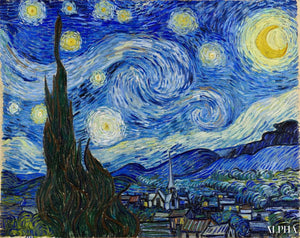
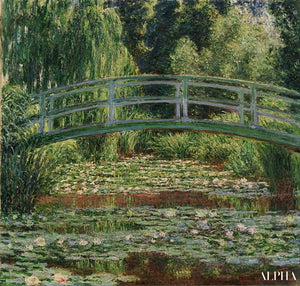
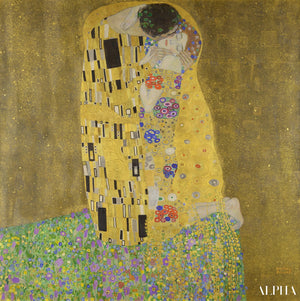
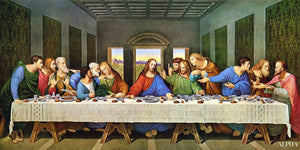
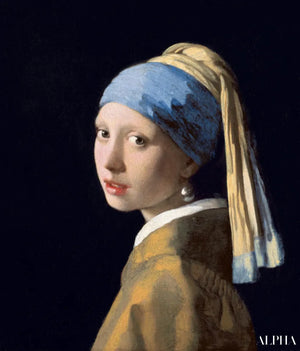
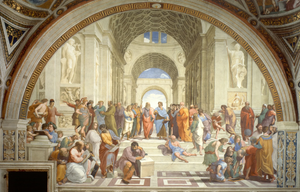
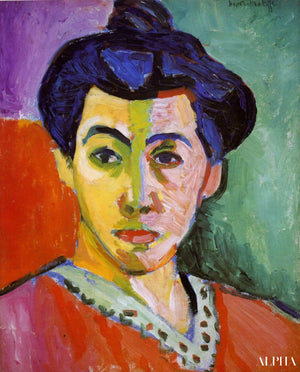
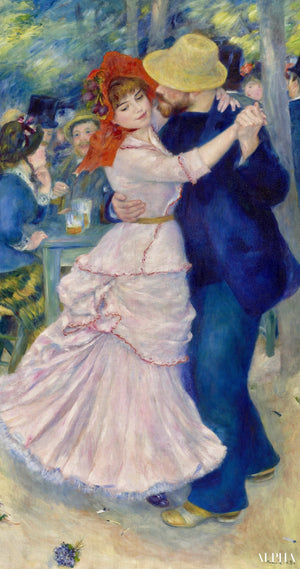


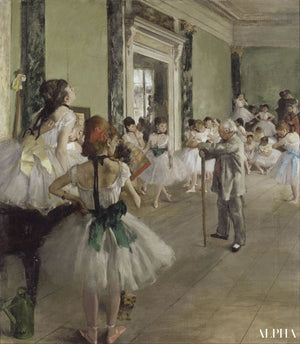



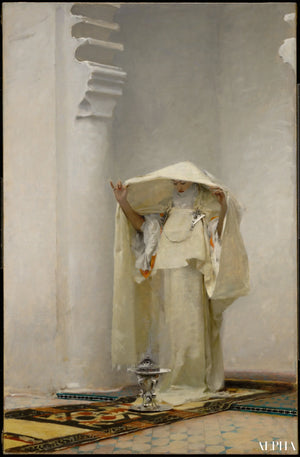
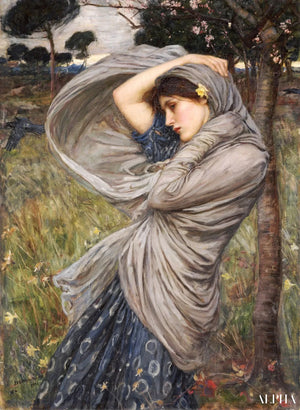







0 comments